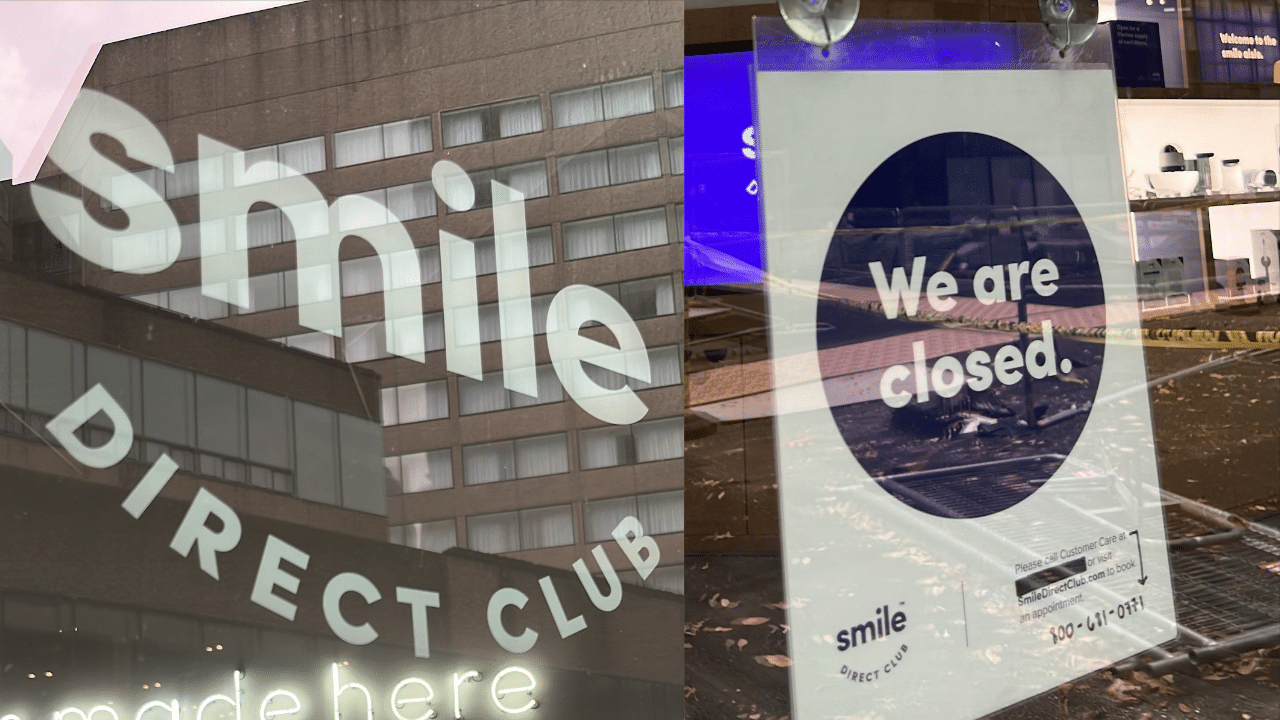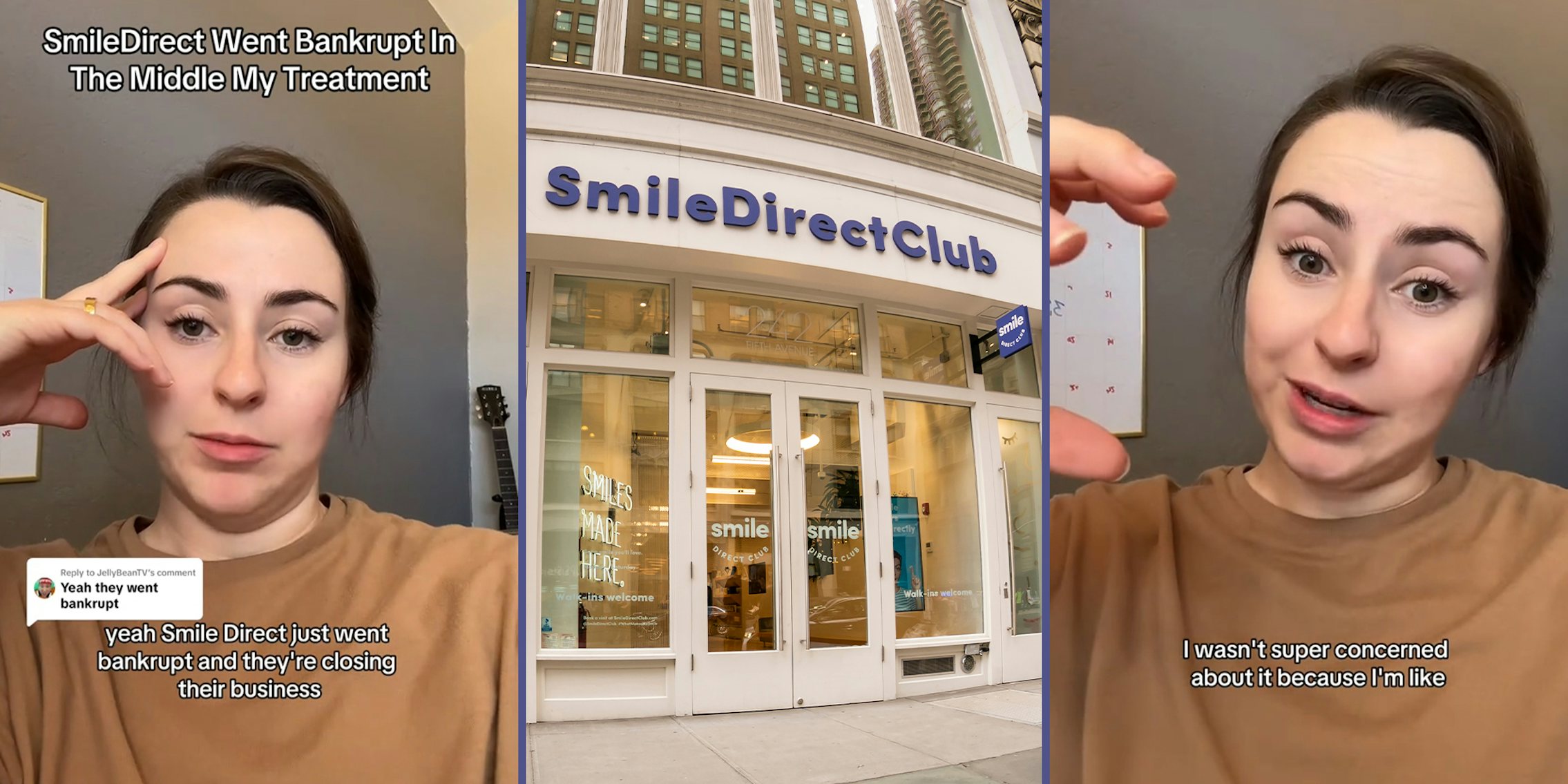Business
What Went Wrong At Smile Direct Club?

Mohammad Ahmad, a 17-year-old from New Jersey, joined Smile Direct Club in October, just a few weeks after the teeth-straightening company filed for bankruptcy.
A sizable discount on the company’s invisible braces and assurances that the financial problems wouldn’t affect business operations, according to him, persuaded him.
However, Mohammad never received the transparent plastic aligners he was promised after the company went out of business in December, putting him and hundreds of other customers in the lurch.
“I basically got scammed,” claimed Mohammad, still looking for a $1,000 (£788) refund from tutoring fees.
What Went Wrong At Smile Direct Club?
It was a humiliating conclusion for the Tennessee-based company, which had previously had a market capitalization of more than $8 billion and had vowed to disrupt traditional dentistry with lower-cost, remotely-supervised care.
The notion won over more than two million customers. Mohammad, who already wore braces, merely wanted to address some minor shifting when he failed to use his retainer as recommended.
But, from the beginning, Smile Direct Club had to defend itself against opponents concerned about its procedures.
It was embroiled in legal battles with business groups representing traditional dentists and orthodontists, who claimed that its remote treatment, frequently provided after customers mailed in impressions of their mouths taken at home, provided inadequate care and accused the company of misleading customers.
Prominent investors, including Hindenburg Research, known for betting against companies, had also expressed concern, accusing Smile Direct Club of “cutting corners” and warning that it would “wind up as a case study in why it’s a bad idea to invest in a company that attempts to fit a complex, dangerous medical process onto a low-cost, high-volume assembly line.”
The firm disputed the charges and called them “the latest in a stream of unevidenced and misleading attempts… to thwart legitimate competition.”
However, it took the threat to its business seriously and moved quickly to quell subsequent bad allegations.
What Went Wrong At Smile Direct Club?
It threatened reporters and academics with legal action and compelled angry customers to sign non-disclosure agreements to receive a refund until a government lawsuit forced it to stop this year.
According to Myron Guymon, president of the American Association of Orthodontists, Smile Direct Club’s troubles eventually caught up with them.
“Orthodontics looks simple but it is a complex medical procedure and should start with an in-person exam and good diagnostic records,” the doctor stated.
Executives of Smile Direct Club did not reply to a request for comment.
The company blamed its demise on typical economic villains: the pandemic and rising prices, which it claimed damaged its manufacturing operation, escalated expenses and squeezed its target clients.
It also highlighted a $63 million award from a court for a contract dispute with its arch-rival and former business partner Align Technology.
But, according to Brandon Couillard, an analyst at Jefferies, deeper issues were at work, noting that the cost of addressing reputational issues – not just about quality but also about customer service – hampered development and caused the loss-making firm to spend too much on advertising.
“It’s not hard to Google and find people who have had a bad experience,” he told me. “As the business matured, people did become more aware of the brand and that wasn’t always a positive experience.”
After a streak of spectacular sales growth, Smile Direct Club’s triumphant 2019 listing on Nasdaq, the US stock market index, proved to be the firm’s pinnacle moment.
It raised over $1 billion and briefly made its young founders wealthy.
However, sales immediately decreased from more than $750 million in 2019 to $470 million last year. More than half of their revenue was spent on advertising to gain new customers. The losses piled up.
When it filed for bankruptcy in September, the company had only $5 million in cash and roughly $900 million in debt.
“It was pretty clear that consumer interest in the brand had been eroding for some time,” said Mr. Couillard.
Investors later accused Smile Direct Club of withholding critical information about its detractors during its 2019 share offering, and the company was sued for violating financial laws.
However, Sanjula Jain, chief research officer at healthcare analytics and research firm Trilliant Health, said Smile Direct Club’s demise is also a reminder of the market’s limits for remote health care, which her team discovered has fallen in almost every area since the pandemic’s peak.
“Consumer behaviours are not changing in the way that a lot of the market and virtual care providers want it to,” she told me. “Will that change over time remains to be seen.”
University of Pennsylvania professor Anna Wexler, who has studied direct-to-consumer health firms, believes there is still a future for remote or partially remote orthodontic care, noting that younger generations, in particular, are dissatisfied with current health care options and seeking more convenient and affordable models.
What Went Wrong At Smile Direct Club?
Her 2020 study of 470 remote orthodontist patients discovered that about 6% were required to return to a regular clinician for follow-up therapy.
However, more than 87% were satisfied with their care and were willing to overlook flaws in exchange for a reduced cost.
The study cautioned that the usage of non-disclosure agreements by Smile Direct Club may have skewed the responses.
On the other hand, Prof Wexler stated that she anticipated it and other companies marketing similar treatments to accept her findings.
Instead, Smile Direct Club threatened legal action, accusing her team of misrepresenting its process and slandering the company.
“I was shocked,” she recounted, noting that her team had taken care not to name any companies.
The conflict, which had not previously been disclosed, was resolved with a letter to the editor.
Prof. Wexler said she was not sorry to see this particular company die, considering its history of attempting to muzzle opponents.
“Maybe if they hadn’t spent so much money on legal counsel they’d be in a better financial state,” she told me.
SOURCE – (BBC)































